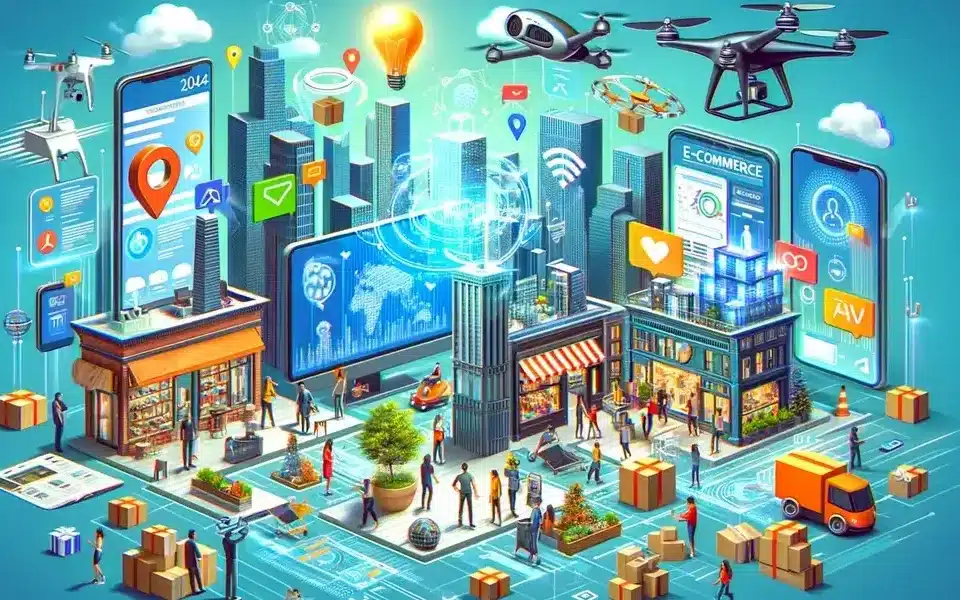
SEO and coronavirus- March 2020
3 April 2020
Adversarial Machine Learning – introduction
24 April 2020
In general, e-commerce seems to be in a pretty good place during the coronavirus. After all, buyers who can not go all the way can go online instead. But of course it is not that simple. At the beginning you need to take into account the economic uncertainty that can be seen in the results of the stock market, and move away from many activities which we usually like, as well as the impact on retail sales, as well as online sales varies significantly depending on the industry and even the company.
E-commerce and coronavirus: impact
E-commerce turned out to be needful in times of social distance and closing shop windows. Unfortunately, some consumers found themselves with less or no work as a result of on-site shelter orders and the closure of unnecessary businesses. Others have tighten insignificant spending due to global economic uncertainty.
It is difficult to predict the full impact of coronavirus on the general increase in online sales, but it is certain that the results will not be consistent in all areas. It will depend on the niche, the changing behavior of buyers, and how long the communities will have to socially distance themselves – among others.
Here are some trends which are taking place right now:
Inflow of online shopping.
Between abiding to social distance guidelines and accounting for closed stores, customers seem to take up most of their online activities. Sales in some industries are much higher, even leading to product shortages.
E-commerce deliveries and concerns about suppling chain.
Although increased demand is better than the alternative, there is concern which supply will not be able to satisfy it. Supply chain disruptions – beginning in China in the early days of the coronavirus epidemic – have affected to stock availability and delivery times.
China is starting to recover, so it may return to normal. However, for e-commerce companies in the rest of the world, they may face even more challenges, particularly in terms of implementation, before the situation stabilizes.
Holding e-commerce orders.
A growing number of orders are hold with delivery and distribution. These are insignificant products for companies that they can do without. Such traffic complicates the situation of some e-commerce companies selling these products.
Product differentiation.
In the face of rapidly changing consumer lifestyles and shopping habits, companies feel the need to act quickly to remain competitive in today’s environment.
Some e-commerce retailers add hygiene products or other medical supplies to qualify consumer requirements. Others had to change their delivery models to offer digital versions of their products or services to completely avoid shipping and delivery.
Increase in online grocery shopping.
Social distance, crowd, queue problems, and frequent shortages of inventory are increasingly frustrating people from grocery stores. Online food delivery services are growing dynamically, gaining new customers.
Increase in the number of e-commerce stores related to coronavirus.
The increase in the number of SaaS e-commerce platforms has lowered the barrier to entering the online sales market and this is a positive thing for retailers supplying high quality products to their customers.
Unfortunately, with the advent of coronavirus, some sellers quickly ariose on online store sites to sell products which they claimed it could protect against viruses or cure the virus. Which are unfounded statements.
Customizing the store for coronavirus
If coronavirus negatively affects sales or the ability to do business as usual, everything will not be lost. Although the impact of coronavirus on consumer preferences and requirements may last longer than a virus, life will more or less return to normal.
How to customize your e-commerce strategy in a changing world:
Contact your producers.
As we have already said, many factors come into play. You can observe an increase in demand in your online store. Then supply can become a problem.
Talk to your producers about how they stand in production and how they expect coronavirus to affect their business. You can not plan what you do not know, so do your best to inform you about all aspects of the supply chain.
Search for alternative suppliers.
When the coronavirus first appeared, it was largely concentrated in China. It is a place where many sellers obtain their products. This caused a shortage of inventory for some sellers who were unable to find alternative suppliers.
There is evidence that China is slowly but surely returning to business as usual, but other countries are experiencing this load. Having several different options can help reduce your risk.
Perform a customer needs assessment.
Think about your target customer groups – what is their current situation? Whether they work at home, they work on the first line as necessary employees. What are their special needs and concerns? Once you understand their current needs better, you can assess your willingness to meet them. Consider whether you currently have inventory to meet their needs or should you consider changing it.
More time at home.
One of the most obvious effects of coronavirus is the increase in spending much more time at home than usual. Consider how you can change the strategy to better appease their needs.
Restaurants are a great example of this. Because they had to close their food service, they increased their delivery service to make ends meet and provide food for customers.
When it comes to e-commerce, some stores have started storing new products and presenting collections of existing products that are more suitable for the everyday lives of many people – especially staying at home.
Include new sales channels.
One consequence of asking people to stay at home is, of course, a large decrease in pedestrian traffic and even store closures. It is a great time to set up an online store to increase your online presence and digital marketing.
Update product pages.
In times of uncertainty, you want to communicate with your customers if one of your services changes.
Coronavirus has presented a situation that can cause supply chain problems, even for individual products – and if that is the case for your company, update your product pages so the customers know what to expect. You may find out that some products will be out of stock for some time, that shipments reach their destination longer, or that some of your products sell out faster than usual.
These are all important information for customers who buy products from your store. Be transparent and provide as much information as possible. By managing expectations, you will be more likely to have satisfied customers – even if you experience a slowdown in services.
Have a data approach and focus on people.
One of the biggest keys to business success is recognizing and meeting the needs of a specific group of clients, even in the face of today’s global situation.
Use it to your advantage and observe the difference in customer behavior. If you focus on meeting their current needs, you’ll be better prepared to survive the storm of uncertainty.
Find opportunities for special offers.
Economic uncertainty, layoffs and job loss can increase price sensitivity for some customers. Consider offering a special discount throughout the store or on specific products that will help increase demand. If consumer spending in your store drops, discounts can be a good way to attract customers.
Preparation of an online store after coronavirus
In addition to adapting your current strategy, you need to take steps to ensure a speedy recovery when you return to normal activities.
Prepare for increased demand.
In some industries, especially those that have seen a drop in sales during a pandemic, demand may increase as consumers begin to return to everyday life. Make sure you are ready to bounce back quickly.
Solution of technological problems.
For brands which are experiencing a slowdown, this is a great opportunity to assess their technological condition without fear of interference.
Look carefully at your e-commerce, integration and marketing platform to make sure you’re ready to shop as usual. Improving site SEO, page speed and optimizing transaction servicing are just some of the many great ways to spend time preparing for future success.
The most important is that no one can predict exactly what will happen. The scale of coronavirus impact is truly unprecedented. No one has the choice anymore to be fully proactive, we all need to respond in real time to changing information and situations around the world.
The time has come to make minor adjustments in response to changes in buyers’ needs and behavior, while preparing to return to normal. First of all, be positive and think strategically, and you will help your company survive the storm.


